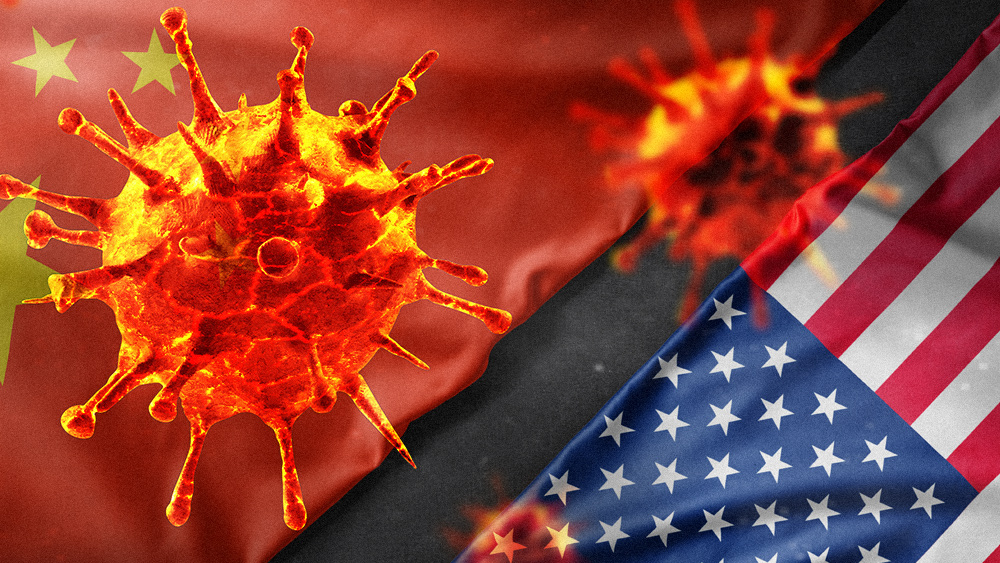Shocking new study says coronavirus infections double every 2.4 days
02/19/2020 / By Ethan Huff

If you’re wondering just how quickly the Wuhan coronavirus (CoVid-19) is actually spreading these days, look no further than a new study published in the journal medRxiv that estimates cases are now doubling every 2.4 days.
Even more serious than the 3.5-day estimate of Mike Adams, the Health Ranger, this 2.4-day doubling rate means exactly what it says: every 2.4 days, the number of new Wuhan coronavirus (CoVid-19) cases is doubling.
This doesn’t mean that health authorities are detecting them all right away, of course. Many of them are still relying on communist China’s bogus numbers to reassure the world that everything is under control when the truth is that it’s more than likely not.
Based on an extensive assessment of individual case reports and estimated key epidemiology parameters, including the incubation period for the Wuhan coronavirus (CoVid-19), now said to be upwards of 24 days, researchers determined that this outbreak, at least in its early days, was spreading extremely rapidly.
Further, they estimate that the R0, or reproductive rate, for the Wuhan coronavirus (CoVid-19) is somewhere between 4.7 and 6.6, which is pretty close to the range put forth by other studies.
“We further show that quarantine and contact tracing of symptomatic individuals alone may not be effective and early, strong control measures are needed to stop transmission of the virus,” they wrote in their abstract.
Listen below as the Health Ranger talks about how this pandemic is shaping up to be a black swan event that could take down the global economy:
China now destroying its own cash to reign in the Wuhan coronavirus (CoVid-19)
Part of the problem is that the Wuhan coronavirus (CoVid-19) has something of an affinity for surfaces as well as bodies. This may be a strange way of putting it, but suffice it to say that the Wuhan coronavirus (CoVid-19) is still infectious even on inanimate objects, and for an unknown period of time, oddly enough.
While some reports suggested five days, followed by nine days, it seems as though nobody truly knows just how long this apparently lab-escaped novel coronavirus can persist on surfaces, which is why drastic measures are now being taken to try to eradicate its potential presence.
“Based on the current available data, I would primarily rely on the data from SARS coronavirus, which is the closest relative to the novel coronavirus – with 80% sequence similarity – among the coronaviruses tested,” says Dr. Charles Chiu, an infectious disease professor at the University of California, San Francisco. “For SARS coronavirus, the range of persistence on surfaces was less than five minutes to nine days.”
At the same time, we’re dealing with a whole different animal here, as the Wuhan coronavirus is of a type and variety that hasn’t been observed in nature, especially with what appear to be artificially spliced genes that were synthetically engineered into its structure.
“It is very difficult to extrapolate these findings to the novel coronavirus due to the different strains, viral titers and environmental conditions that were tested in the various studies and the lack of data on the novel coronavirus itself,” Dr. Chiu is further quoted as saying.
“More research using cultures of the novel coronavirus are needed to establish the duration that it can survive on surfaces.”
In the meantime, communist China is taking its own drastic measures to try to obliterate it, including by disinfecting large areas where it might have lodged itself, as well as destroying paper cash and coins of its own currency because these items pass through many people’s hands every day.
Be sure to check out the H.R. Report channel at Brighteon.com to keep up with the latest coronavirus news.
More stories like this one are also available at Outbreak.news.
Sources for this article include:
Tagged Under: coronavirus, covid-19, currency, double, germs, global emergency, infection, infections, novel coronavirus, outbreak, pandemic, transmission, virus, Wuhan coronavirus




















